Super Smash Bros. is a franchise that goes back to that oldest of childhood arguments, “who would win in a fight?” I probably don’t need to explain the premise of the world’s most popular crossover fighting game, so let’s get right into it.
With Super Smash Bros. for 3DS and Wii U out and established as solid additions to the franchise, there are two obvious questions: are the games good, and how do they compare to the previous entries in the series? The first one is easy to answer. Yes, these games are good. They deliver the fast-paced, often quirky action that Smash Bros. fans have come to expect. The much more difficult second question will be the focus of this article.
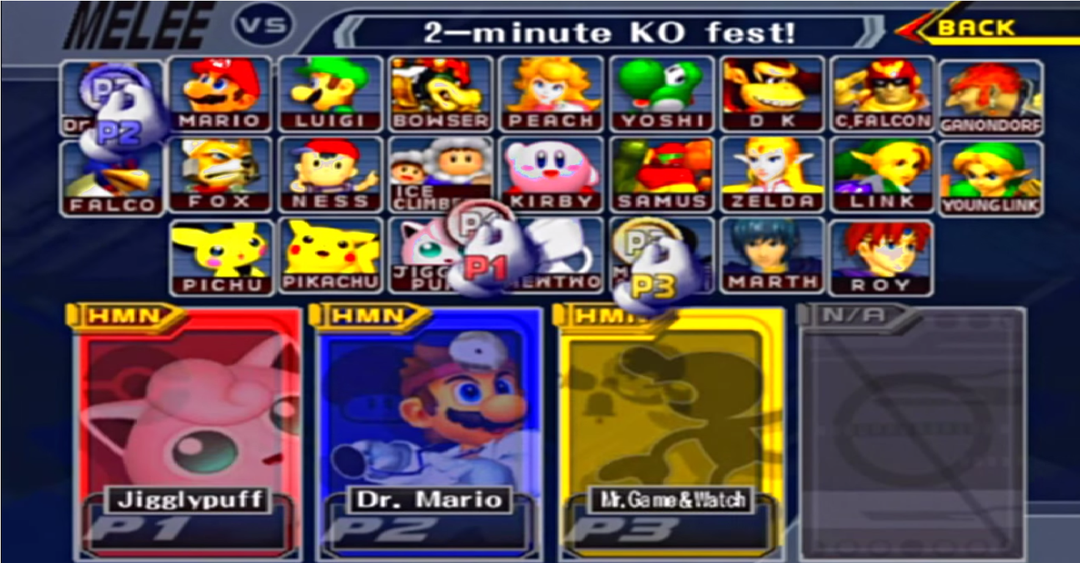
A quick history lesson: The original Super Smash Bros was groundbreaking, no question about it. Fighting games were plentiful, but there had never been one quite like this. It did away with the close up 1v1, the push towards gritty violence, and replaced it with a sense of whimsy and 'what if' that is hard to deny. It pulled in a generation of gamers, even a bit unexpectedly, and set the stage for a franchise. Smash Bros. Melee was the sequel for Gamecube, and built on the initial concept with sharpened mechanics, additional characters, and all-around heightened intensity. This is where the perhaps natural evolution game came from towards competitiveness, where suddenly a game that was built on childhood nostalgia had rooms full of people chanting and calling out with every attack.
Remember the first Smash game only had 12 characters - by this second game, it was up to 25, and the newest currently sitting at a whopping 51.
After Melee’s success, Smash Bros. Brawl was surprisingly divisive. With its more 'floaty' feel and inclusion of a cooperative story mode, the game seemed targetted more towards casual play, not tightly fine-tuning and balancing the game for the competitive scene that had appeared in the several years before. leading to a great deal of backlash, particularly from the latter group. With as backstory, the 2014 offering of Smash is upon us. Can it cater to the competitive crowd - the sort of people who have narrated 'the best plays of 2014' uploaded online - while still capturing that sense of light-hearted fun Nintendo is known for? This new Smash Bros. tries to split the difference between Melee and Brawl, and because of it, takes a great step forward for the series.
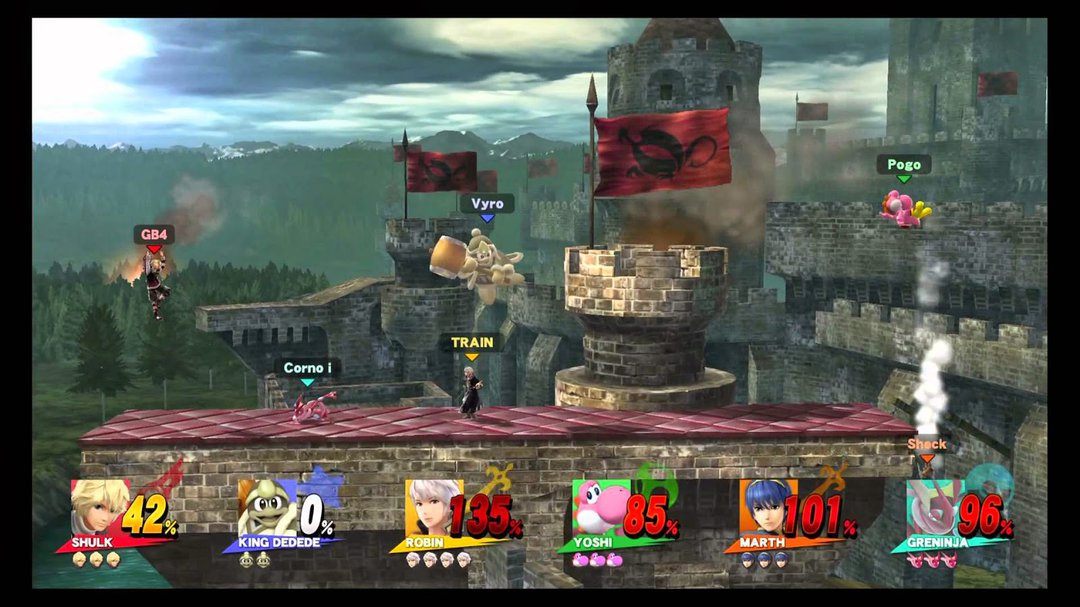
First of all, Super Smash Bros. has taken some steps to improve the competitive experience, while still giving plenty to casual players. The extreme floatiness of Brawl has been toned down, making the new version handle sharply, more like Melee . Nintendo has also included “Omega” versions of each stage, where that level’s terrain and hazards are removed, leaving competitors with a safe, noninvasive area to fight in, reminiscent of Final Destination (“Final Destination, no items” was ever the refrain of the competitive Smash player). This is a fantastic, inventive, and really simple way to solve one of the issues between casual and hardcore players: with the flick of a button, the next round of gaming can be a ridiculous festival of items and level hazards, while the one you load up first is a straight-to-the-point bout without any distractions. Finally, the tripping mechanic has been taken away, which I think might be the one decision that all fans of the series will agree was a good one.
This is a great example of an "Omega" stage - Its the Castle Siege level, but transformed into a single flat platform, with no items. Turn off Omega Mode, and this same level returns with items and its hazards.
On the other hand, this new title has removed some key mechanics that top-level players heavily rely on, notably wave-dashing and edge-hogging. Wave dashing has been taken out, effectively replaced with a less powerful technique called perfect pivoting, which allows a character to move slightly while attacking. Edge hogging, meanwhile, has been completely overturned, as priority is now given to the second player who tries to grab on, rather than the first. Rather than stopping an opponent’s recovery, someone who tries to hold the edge will instead be knocked off himself. Perhaps not a more or less competitive move, but certainly a game-play change that many hardcore fans will notice.
So what does all of this add up to? Is this the best game in the series? Is it the best for casual players, or the best for the competitive players that found their groove with the second installment in the series? As you might expect, the changes mean different things to different people. Personally, I've found some good, some bad, and some ugly with this latest installment. I’ll start with what I dislike, as that is a much shorter list:
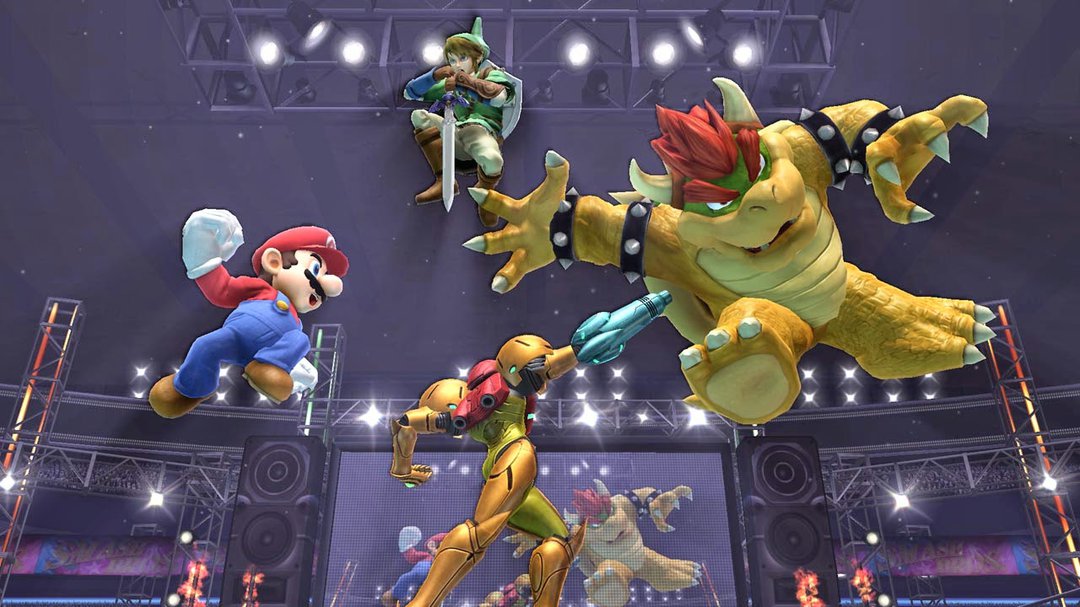
First of all, items. This is the first game in the Smash Bros. franchise that’s made me agree with the majority of the competitive scene when they say that items throw off the balance of the game. Now, previously, could getting a hammer or a smash ball tilt the battle in your favor? Of course. On the other hand, getting to the items first and using them effectively was as much a contest of skill as the fight itself. In this new game, even when set to low, items are plentiful and much too powerful, with many that can instantly cause a K.O. or entirely disrupt the flow of the game. They've escalated from fun to intrusive. Great for casual play, but even then you might switch off some of the more frustrating items that can swing things dramatically.
Meanwhile, some of the new level designs are absolutely fantastic.
Second, the story mode, or rather the total lack of it. Brawl crafted a surprisingly in-depth and engaging story with The Subspace Emissary. In addition, that mode forced players to broaden their horizons by presenting them with unique situations, and requiring them to play as a wide array of different characters. While this sort of cooperative adventure is hardly the focus of the franchise, it was an excellent addition, and I was highly disappointed to find that it had been thrown completely out the window. There are plenty of game modes in it's place, but I find myself missing the story-esque Emissary mode.
Third—and this is less of a quibble with the game itself and more with Nintendo’s policies—is the inclusion of Mewtwo as exclusive downloadable content for people who buy both the Wii U and 3DS versions of this game. DLC is already a touchy subject in the gaming community, and this version of it couldn't have been better designed to tick off people who only own one of those systems, myself included. This is certainly the “ugly.”
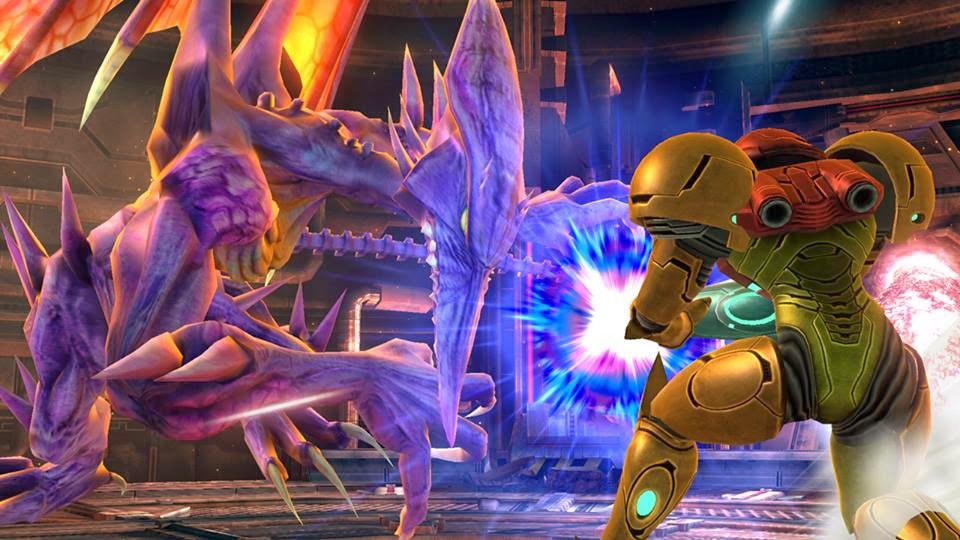
However, new Smash also has a lot to recommend it. While what they've done with Mewtwo is an absolutely atrocious use of DLC on Nintendo’s part, the idea of a Smash Bros. game with the potential for good DLC is exciting. Whereas fans used to have to wait years for the next Smash installment, it’s now possible for Nintendo to develop and release content on the fly, whether it be patches and fixes, entirely new characters and stages, or even additional game modes. The jury is still out if they are going to update with DLC on any sort of schedule, or at all, but we can hope as players that some more fan favorites might be in the works.
We know there are more than a few of you still praying for Ridley. He IS an awesome level boss though. Kudos.
Another opportunity that arose from Nintendo graduating to a full online experience is the ability to play against people from around the world. Though hardly a new concept in gaming, this is a logical and important step for the Smash Bros. franchise. Being the bitter, jaded misanthrope that I am, I especially appreciate that it is an online experience that does not actually require (or even allow) me to interact with the other player in any way besides playing the game itself. Admittedly, depending on one’s personality, that could be either a good or a bad thing. This, combined with the aforementioned potential for DLC, could allow for some incredible things. We’ve got an 8-Person Smash mode in the Wii U version already. Could we someday see a 16-way fight? A 32-person war? A Smash Bros MMO?
...Okay, so that last one’s a bit far-fetched.
Anyway, on the subject of new and exciting opponents, Nintendo has taken a much more unique step than introducing online play. The development and release of the Amiibos has made quite a stir in the gaming world, especially following a story about how an Amiibo was entered into a tournament as a joke, and nearly won the whole thing. They really do learn and adapt based on the play-style of the people they play, and playing against them can sometimes feel as rewarding as playing against human opponents. I know that Wyatt is in abusive relationships with several Amiibos already, and will be publishing an article soon (once he's done naming all of them).
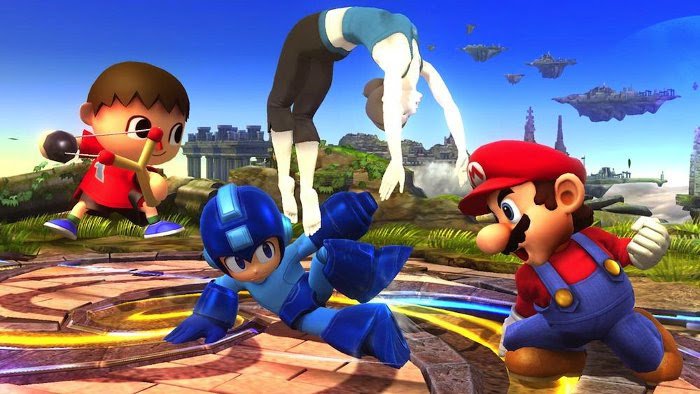
Of course, of particular interest in any Smash game is the list of playable characters, and the new Smash Bros. certainly does not disappoint there. While I may not agree with every one of their decisions (Lucina could have easily just been a different Marth costume like the male and female versions of Robin, and it was a shame to see the unique Pokemon Trainer character swapped out for a simple Charizard), Nintendo has really gone the extra mile to present a varied and balanced roster with some exciting new additions. There are seventeen new characters, and the non-Nintendo mascots are especially impressive. Mega Man makes all his old sounds from the original series, while Pacman's final smash attack is just a wonderful trip down nostalgia lane.
Trust me, Megaman feels wonderfully different, while the Villager is....well, the Villager.
I say balanced not because every character is perfectly matched—they aren’t—but because it’s clear that Nintendo has done some serious retooling to even out different styles of play. Rather than just allowing the fastest characters like Sheik and Falco to dominate the field, Smash Bros. welcomes players to explore other options. For example, Bowser attempts to make up the speed disadvantage with immense strength and mechanics such as super armor, while Mega-man and Palutena allow more tactically-minded players to hold their own against quick-fingered brawlers. I know Shulk is quickly becoming a fan favorite, being a sword-fighter that can change his own internal statistics mid game.
So what’s the final word on Smash Bros ? Nintendo has done a few things that I really don’t like, and made some decisions that were all but guaranteed to upset the competitive scene. However, they've done many more things that I do like, and have set the stage for some really exciting stuff. For one, the character roster feels much more balance than the last version, while the potential for DLC, the introduction of Amiibos, and the inclusion of the new 8-person Smash mode in the Wii U version showcase new options and variety. It's more competitive than Brawl, yet has more options for ridiculous party fun. In the end, this new version is a good mixture of the last two games in the series, and with Nintendo being more experimentive about the game series, it will be interesting to see where this goes in the future.
Is the new Smash Bros. the best of the series? That might be up for debate, but what isn't is that it's a very solid, and very fun game. Keep going strong, Smash.